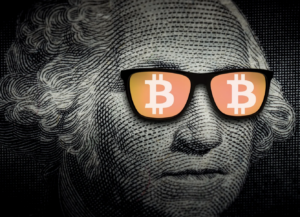The dollar and the Ibovespa, the major stock index on the Brazilian stock market, are currently experiencing positive movements as concerns over interest rates in the United States persist. Just a little over a month ago, the Ibovespa reached its lowest level ever at 128,524 points, with a 0.60% decrease compared to the previous trading session. At the same time, the dollar experienced a slight increase of 0.09%.
In the midst of uncertainty surrounding the trajectory of interest rates in the United States, the dollar has now reversed its course and is performing better on Thursday, March 18. Investors are eagerly awaiting a speech from a director of the Federal Reserve (Fed), the American central bank, which is expected later in the day. The economic agenda for today is relatively weak, both in Brazil and internationally.
Weekly statistics on unemployment insurance in the United States reveal signs of strength in the world’s largest economy, which investors are closely analyzing. Meanwhile, in Brazil, the Ibovespa is experiencing a downward trend on the B3 market.
As of 11:10 am, the dollar has seen a 0.12% increase in value. This recent upward movement is in contrast to the 0.09% increase observed the previous day. Over the course of a week, the dollar has improved by 1.50%, while on a monthly and annual basis, the improvements stand at 1.59%.
On the other hand, the Ibovespa has dropped by 0.03%, reaching 128,483 points. The previous day witnessed a decline of 0.60%, pushing the index to its lowest position in nearly a month, at 128,524 points. Over the past week, the drop in the Ibovespa has amounted to 1.88%, and over the past month and year, the drops have been 4.22%.
With a less robust economic agenda for the day, global markets remain relatively stable as investors eagerly await fresh figures and speeches. Market participants in the United States pay close attention to the Federal Reserve, and the speech by Raphael Bostic, the president of the Atlanta Fed, is highly anticipated.
Meanwhile, international leaders have been more cautious in recent days when discussing the possibility of interest rate cuts in the world’s largest economy. The Federal Reserve’s chairman, Christopher Waller, has emphasized the need for low inflation to be maintained before any action is taken to lower the benchmark interest rate.
Despite nearing its inflation goal of 2%, Waller has expressed the importance of implementing the cutbacks in a methodical and careful manner, rather than taking shortcuts. These remarks go against recent market expectations, which have anticipated a series of interest rate cuts from the North American central bank, with forecasts suggesting a reduction of 1.5 percentage points by the end of the year.
However, these expectations are beginning to shift. According to the CME Group’s FedWatch tool, 61% of investors now believe that the Fed will start reducing interest rates in March, with this figure rising to 80% by the end of 2023.
Since July, the Federal Reserve has maintained a base rate between 5.25% and 5.5%. The market is closely monitoring any developments in interest rates as they have a significant impact on the performance of the dollar and the Ibovespa. Investors will continue to watch for any signals or announcements from the Federal Reserve that could shape the direction of these markets in the near future.






